What is Green Tea? Learn About All the Types & More

Green tea has been a favored beverage in Asia for centuries. In China, it is a part of many traditional medicines and is commonly used as a diuretic, astringent and to assist the functions of the cardiovascular system.
Even in America, Consumer Reports lists tea as the number two most popular drink with over 159 million Americans enjoying it daily (1)(2).
But what is green tea, really? And what are the different types of green tea available?
This article will answer these questions as well as cover the history and health benefits of this popular drink!
What is Green Tea?
Green tea gets its name from its green coloration which occurs as a result of the plant's chlorophyll levels. The color can vary depending on the region grown and the processing methods used.
All true tea varieties, even green tea, come from the Camellia sinensis plant. The differences between teas come from the processing methods used.
When making green tea, the leaves of the plant are not oxidized which gives the tea a very fresh, grassy taste and a green coloration due to the chlorophyll.
The Camellia sinensis plant is an evergreen shrub or small tree that grows naturally throughout the southwestern forests of China. The plant shrub grows best at high elevations.
Green tea is made predominantly from Camellia sinensis var. sinensis and black tea from Camellia sinensis var. assamica, which are varieties of the same species of plant.
There are four varieties of the tea plan; however, the two most common ones are the Camellia sinensis var. sinensis and the Camellia sinensis var. assamica.
It is believed that the Camellia sinensis var. sinensis has a slightly sweeter flavor than the Camellia sinensis var. assamica.
Nowadays, green tea production takes place primarily in China and Japan where growers supply most of the world’s market.
Caffeine Content in Green Tea
Green tea contains a moderate amount of caffeine and depending on the different types of green tea, it can be considered a high-caffeine tea with 12 to 75 milligrams of caffeine depending on the variety and brewing practices. Shade-grown green tea varieties, for instance, usually have higher caffeine levels.
A cup of coffee usually contains anywhere from 80 to 200 milligrams of caffeine.
Green Tea Processing Steps
Harvesting of Green Tea
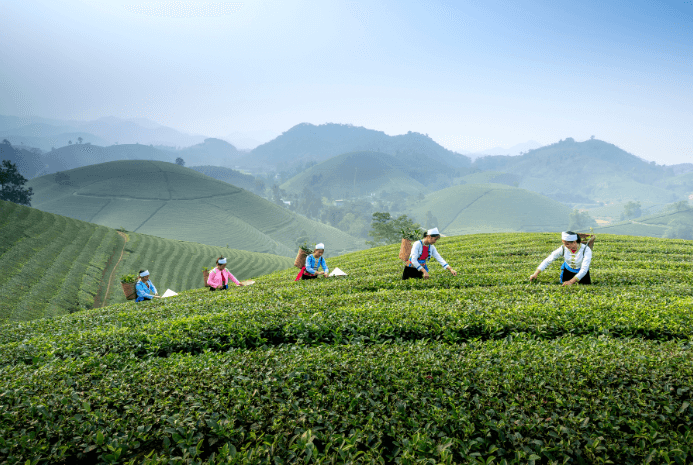
Hand harvesting guarantees only the best leaves are picked. Harvesting takes place three times a year when the shrub produces the first flush of leaves which many consider the best quality.
Another important factor in harvesting is the growing conditions that also impact the different types of green tea. You’ll find shade-grown and sun-grown green teas.
Withering, First Drying & Final Drying
When making green tea, the leaves undergo heat preservation immediately after harvest, then again after fixing (more on this in a bit), and finally after rolling.
Japan dries the leaves of green tea with steam but Chinese green tea processors use dry heat in an oven drum or wok.
Virtually all green tea is made up only of leaves, but a few Japanese types also use stems along with leaves.
Fixing
Fixing is important to prevent oxidization in the green tea leaves in order to fix the color to green and the tasting quality.
In some parts of the world, green tea is referred to as ‘unoxidized tea’. It contains much higher concentrations of antioxidants, polyphenols, and chlorophyll than any other tea type.
Black tea leaves, on the other hand, are oxidized before drying.
Fixing is comprised of a heating process that always differs between tea makers and regions. Each one has its unique processes which give their teas varying flavors. The most common methods are:
- Pan firing: Chinese green teas are toasted in a pan or a wok to bring forth the natural enzymes in the plant. The method also preserves the green coloration which is very pronounced in some green types such as Dragonwell which has a lovely faint green hue.
- Steaming: Virtually all Japanese green teas are quickly steamed to give them a bright green coloration while ensuring complete preservation.
Rolling
The step after the first drying process is either rolling, twisting, or curling the green tea leaves. This process is usually done by machines, but higher-quality teas are done by hand.
Grading
The final step in green tea processing is the grading which divides the tea based on size and shape.
History of Green Tea

The roots of green tea go back to 2737 B.C. in China. Chinese Emperor Shennong drank water that accidentally contained green tea leaves (3). He felt like the flavor was so refreshing that it quickly became a popular beverage.
Initially, green tea was so costly it was only available to the elite in Chinese society. By the 14th century AD, tea had become more readily available which brought the price low enough that the commoners could afford the beverage.
Also, tea started to become an integral part of Chinese traditional medicine.
During the Tang Dynasty in 800 A.D. the book ‘Cha Jing’ which translates as ‘The Classic of Tea’ was written by Lu Yu. When Lu Yu was a boy a Buddhist monk adopted him. He grew up learning how to brew and serve tea.
As Lu Yu grew up, he improved his brewing process and his interest in tea grew. His book became the first literature to explain green tea's history, culture, and art.
The British and Tea

By the 15th century, green tea had migrated west with European explorers. The flavorful tea quickly became a leading popular drink. The British embraced green tea and it became the national beverage of Great Britain along with black tea.
Green Tea in the Americas

American colonists also fell in love with tea when English settlers introduced the beverage. In the Americas, green tea was known as ‘bullet tea’ because the tea was in bags shaped like a bullet.
The colonist’s obsession with tea was so extreme that the English Parliament decided to impose a Tea Tax in 1767. At the news of the new tax, the colonists revolted and quickly threw 45 tons of green tea overboard into the harbor in revolt. The incident became known as the ‘Boston Tea Party’ (4).
Nowadays, the popularity of green tea has skyrocketed. The beverage is sold at coffee and tea shops around the world.
Different Types of Green Tea
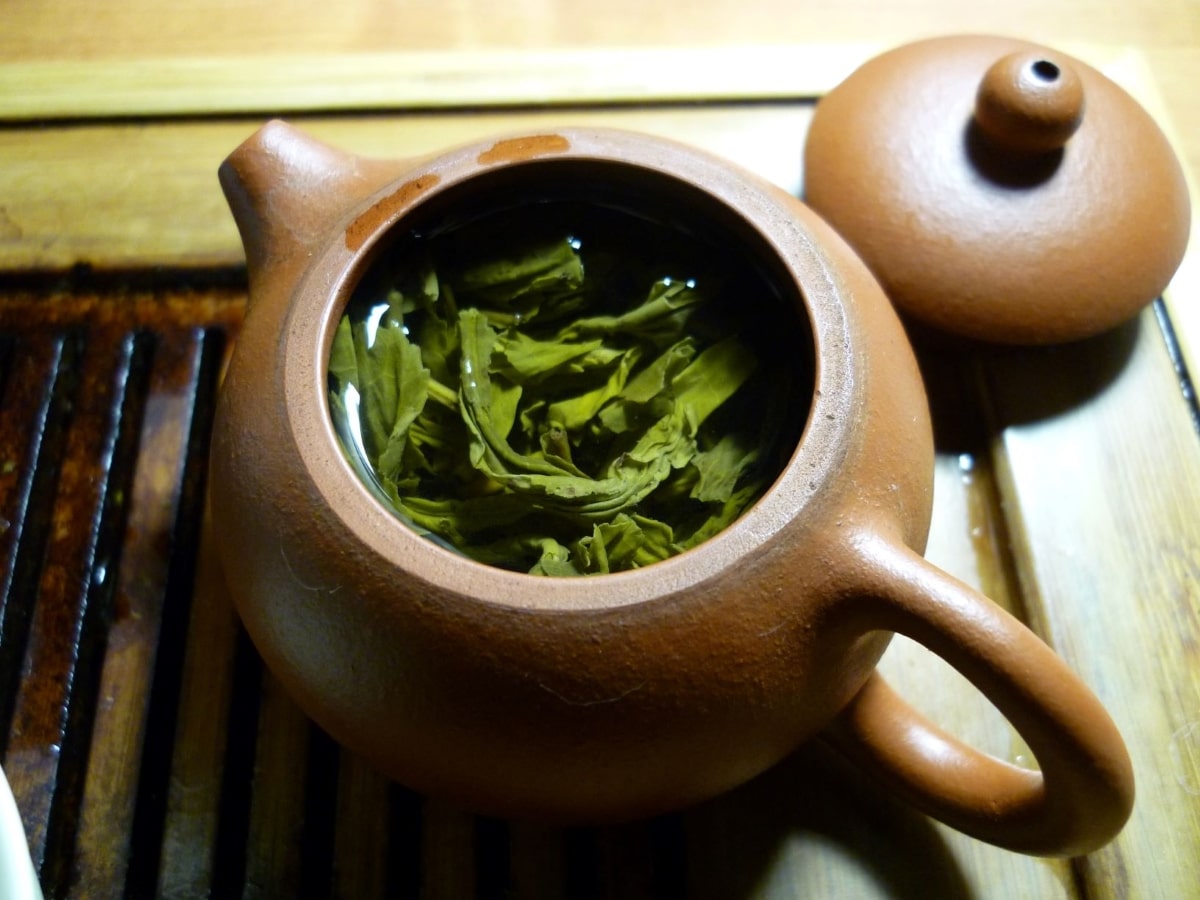
Green tea types vary depending on the processing and region grown. The goal with green tea is to always halt any oxidation from occurring so the leaves quickly undergo processing.
Japanese and Chinese green tea that has been steamed will have a different flavor than Chinese green tea that has been flattened and then allowed to dry out after harvest. Pan-frying also impacts taste and texture by making the leaves stiffer.
Chinese vs. Japanese Green Tea: What’s The Difference?
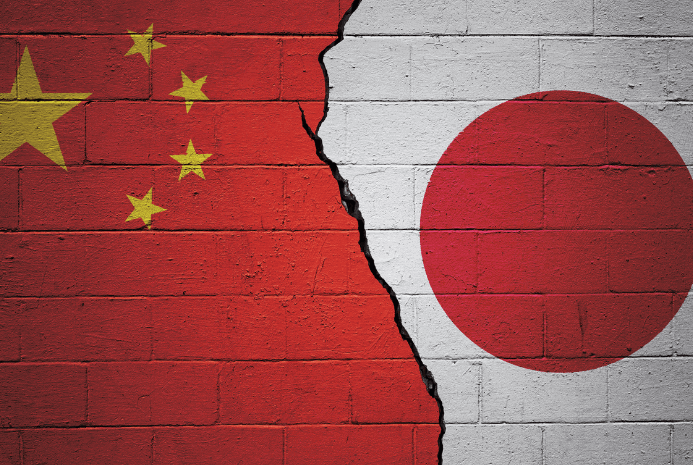
China is the biggest producer of tea compared to Japan. The origins of Japanese green tea emerged in China when tea was brought over. Throughout the centuries, Japanese green tea has developed its own characteristics reflecting the terrain where the tea trees are grown, impacting the flavor.
The lower elevations and mild winters in Japan help ensure more growth potential but the insects are also more prolific. Cultivation in Japan is more intense because they often have to add shade, trim the leaves, and more. Also, machines are usually used to process the green tea leaves.
China typically doesn’t trim the leaves of the tea plants and lets natural growth occur. There is a great deal of variation in Chinese green tea which creates very unique brews.
Chinese vs. Japanese Green Tea
| Chinese Green Tea | Japanese Green Tea |
| 3.18 million metric tons per year (5) | 78,000 tons per year (6) |
| Harvest takes place in the early spring | Harvest takes place in the late spring |
| 300 to 1,000 meters (985 to 3,280 feet) (7) | 500 meters (1,640 feet) (8) |
| Hand processed | Machine processed |
| Pan fried | Steamed |
| Fruity and floral notes | Sweet with vegetal undertones |
| Clear and light green appearance | Bright green or yellow shades |
To prevent oxidation, China and Japan differ in processes. China uses pan firing in a metal drum or backset, but Japan steams its green teas.
Chinese green teas tend to have a mellow, floral flavor and Japanese green teas tend to be richer with vegetal and umami flavors.
Umami Characteristics

In the early 1900s, Kikunae Ikeda first used the Japanese term Umami to describe a rich flavor that is both savory and pleasant (9). Green tea contains an abundance of glutamate which is why it tastes rich and savory.
The leaves are young, shade grown, and harvested during the late spring. The catechins in the tea create astringency which is caused by exposure to sunlight. Growing the tea shrubs in the shade helps ensure the Umami flavor, promotes sweetness, and prevents catechins from developing.
Brew two teaspoons of Umami green tea at low temperatures of 140 degrees Fahrenheit for around two minutes. The low temperatures help pull the amino acids out of the green tea leaves to give them an extraordinarily rich flavor.
Popular Chinese Green Tea
Let’s explore the diverse types of green tea from China.
Gunpowder Green Tea

Gunpowder tea is one of the most popular Chinese green tea varieties. One of the biggest appeals of Gunpowder green tea is that it is versatile.
You can drink it with milk, iced, hot, or even make it an alcoholic beverage *wink, wink*
Initially, Gunpowder tea was known as ‘pearl tea’. It is similar to Zhen Mei and Chun Mei tea. Gunpowder has a unique leaf shape and flavor. It’s widely grown throughout China’s many provisions and even in other countries.
The tea leaves are rolled into small tight pellets - hence its name.
The leaves used to make Gunpowder are usually made from older and mature leaves. It usually has less caffeine than varieties made from younger leaves.
This exceptional tea also has an affordable price which helps fuel its popularity. It’s even used as a base in tea mixes around the world. Gunpowder is an important ingredient in the famous Moroccan mint tea which is a combination of fresh mint with Gunpowder.
Gunpowder has been around for over 1,000 years since it made its debut during the Tang Dynasty. It was one of the first teas that China exported to the world (10).
The flavor of gunpowder is slightly smokey. It has a deep yellow color when brewed. However, you should take great care to not over-brew the tea. Many who enjoy Gunpowder tea also like to add lemon or a natural sweetener.
If you would like to try a fun beverage, then we encourage you to try Pink Milk Tea!
The high level of chlorophyll found in Gunpowder makes it a better choice to make Pink Milk tea because the chlorophyll will react with the bicarbonate of soda to make a pink hue. You’ll want to boil the Gunpowder tea leaves for 20 to 30 minutes and then mix bicarbonate of soda to make the fun color transformation.
Dragonwell (Longing)
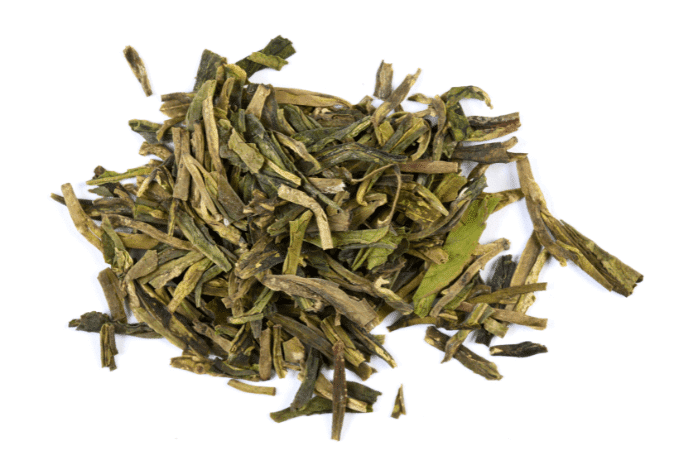
Another Chinese green tea favorite is Dragonwell, also called Longing or Lung Ching.
This type of green tea is cultivated in the Zhejiang Province of China. Many consider Dragonwell to be one of China’s most famous teas. Throughout the centuries, it has been featured in Chinese mythology and poetry, and it has been a favorite of emperors and visiting dignitaries.
This tea is harvested from plants grown at an elevation of 800m above sea level. The area is shrouded in clouds and mist with an elevated level of moisture in the air.
Dragonwell is famous for its four characteristics:
- Color: A lovely jade hue
- Aroma: Vegetative
- Flavor: Chestnut
- Shape: A soft, featherlike appearance
Dragonwell tea is harvested in mid-April, and to obtain the famous shape of the tea, the leaves are pressed using the heel of the hand against the surface of a roasting walk.
The firing process creates a tea that has a very fragrant scent and a green color with small flecks of yellow and gold.
During firing, it's important that the temperature is never too high to preserve the tea’s flavor and aromas.
The taste of Dragonwell is very nutty with a strong, crisp vegetable undertone. It has a good balance between sweet and astringent. This tea is rich in vitamin C and catechins.
To enjoy a cup of Dragonwell, use a heaping spoonful of the tea and mix in six to eight ounces of water. You’ll want to steep at a temperature of 185 to 195 degrees Fahrenheit (85 to 90 degrees Celsius) for two to two and a half minutes.
The longer you steep the tea, the stronger the taste and the more astringent. You can drain the leaves and let them dry to enjoy additional servings.
Bi Luo Chun

Another Chinese green tea, Bi Luo Chin (also called Biluochun) is grown in the Dongting mountains located beside Lake Tai in Suzhou, Jiangsu, China.
The name Biluochun translates into ‘green snail spring’. The tea is very delicate and rolled into a spiral that looks like the meat of a snail. Bi Luo Chin translates into "Jade Curly Spring Tea".
Bi Luo Chun has been around for centuries and is actually chronicled in writing from the Qing Dynasty. Many experts consider it one of the first green teas to ever be grown and harvested in China.
The flavor of the popular green tea is very nutty with a strong fruity undertone. During the spring, the tea leaves grow alongside plum and bayberry trees which many think somehow account for the fruity taste.
When brewing a cup of Bi Luo Chin, give the tea leaves a cool rinse with water and then steep for two minutes in water heated to 167 to 176 degrees Fahrenheit (75 to 80 degrees Celsius). Add two teaspoons of Bi Luo Chun to your teapot for a robust smooth flavor.
For a stronger brew, you can steep it for 3 minutes. If you would like a more mellow cup of green tea then use only a single teaspoon of the tea during preparation.
Yun Wu
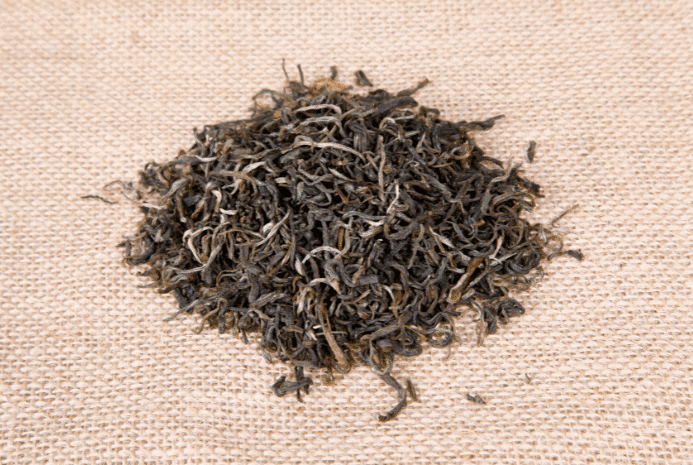
Yun Wu (translation clouds and mist) is cultivated on Huaguo Mountain. The tea bush thrives in foggy high altitudes which helps keep the tea shaded and well-hydrated and the heavy cloud cover provides protection from the sun.
Grown between 800 to 1200 meters (2,625 to 3,937 feet) above sea level, the tea leaves are always hand-picked in the month of May from tea trees that are at least 20 years old.
Following processing, one of the first things you’ll notice about the Yun Wu is the unique twisted, irregular leaves. They are rolled into spiral shapes and small pellets.
The flavor is laced with fruity notes combined with a very mellow smokiness. To make the best cup of Yun Wu is to steep the tea leaves at 170 degrees Fahrenheit (77 degrees Celsius) for two to three minutes.
Popular Japanese Green Teas
Below are a few of the leading Japanese green teas.
Sencha
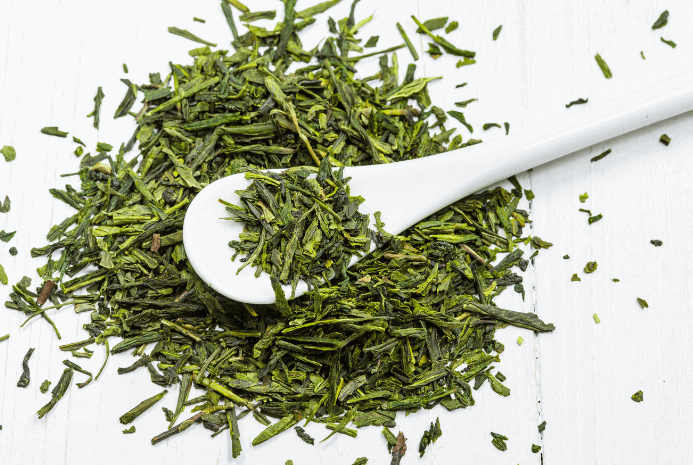
Sencha accounts for 70% of tea consumption in Japan. It is also one of the most popular exports. This tea is made from only the youngest leaves which is why it's referred to as the first flush tea. It is rich in nutrients and flavors.
This green tea is unique because it is actually sun grown. The tea leaves are long and thin. They appear similar to dried grass. The color of the brewed tea is a deep yellow with a refreshing aroma. The texture is smooth and the taste wonderfully refreshing.
To brew the perfect cup of sencha tea add one teaspoon of tea mixed with one cup of water to your teapot. The perfect brewing temperature is around 170 degrees Fahrenheit (77 degrees Celsius).
This tea has a low brewing time of only 15 to 30 seconds to steep, although some people like to steep the tea for up to two minutes. Subsequent steepings can be longer.
When shopping for Sencha green tea you’ll encounter several kinds such as the following:
- Shincha: Shincha (also called Ichiban-cha translated into new tea) is a type of sencha that is harvested in the early spring and has a very sweet, rich flavor. Shincha is very popular in Japan and is usually sold only inside the country. It’s often hard to find it in the global marketplace.
- Asamushi: This is a steamed type of sencha. All sencha tea undergoes steaming during processing but time varies. With Asamushi, steam lasts only 20 to 30 seconds. The light steaming time creates a delicate, clean-tasting tea.
- Fukamushi: This tea is steamed for a minute or longer. It has a bold flavor with a dark, rich green hue.
- Chumushi: Is steamed for 30 seconds to a single minute. It is a mix between Fukamushi and Asamushi sencha.
- Powdered: A powdered version of Sencha is shade-grown, which gives it a vegetal flavor. This form of green tea is often used in baking.
Matcha Tea
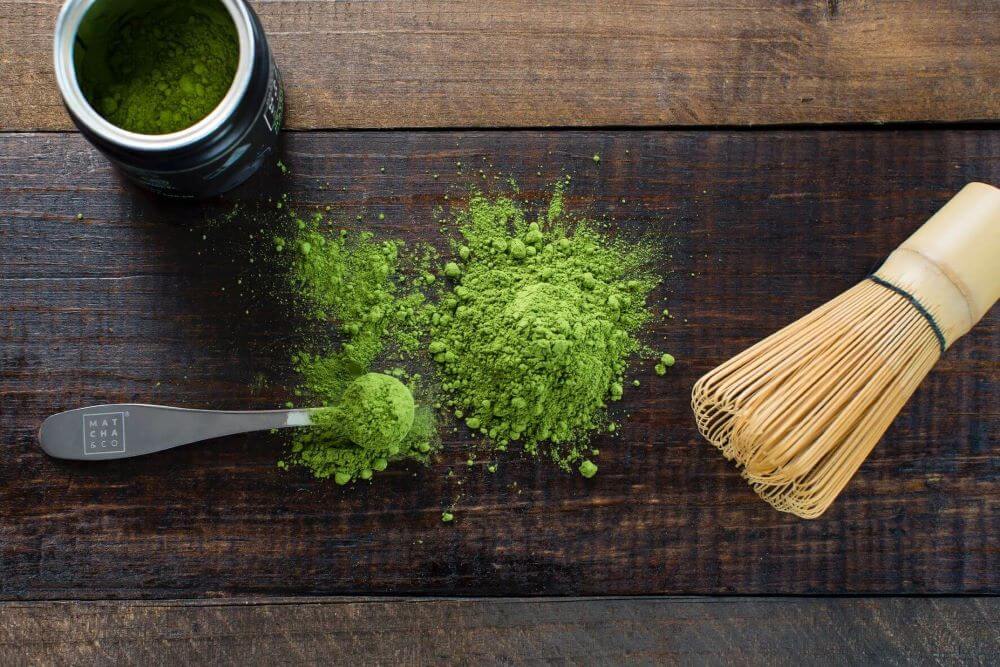
One of the most popular types of green tea from Japan is Matcha Tea. It is always used in Japanese tea ceremonies and it is a powdered type of green tea.
To create matcha tea, the tea plants are shaded for three weeks before harvest. Any time a tea plant is exposed to sunlight it starts to transform theanine to catechins which creates a bitter taste.
To lower the bitterness, the tea plant is shaded to create a maximum amount of theanine in the leaves which gives the tea a sweet taste.
After three weeks of shading, the tea leaves are harvested. Only the top three sprouts are picked and used. It is believed that throughout the winter, the tea plant pushes all of its nutrients into the sprouts. The sprouts are brimming with nutrients to create a wonderfully smooth and sweet flavor.
The top leaves of the plant are removed from the stems before grinding. High-quality matcha has a lovely green color, unlike low-quality matcha which often has stems ground that gives the tea a yellowish hint.
The tea leaves of matcha are ground in a granite mill that is very complex with grooves that push the green tea leaves from the center so they are ground exceptionally fine. It takes about an hour to produce 50 grams of green tea powder.
Hojicha

Hojicha is made from roasted tea leaves. The color can range from light to dark brown. It resembles an oolong tea but it is a green tea that has been roasted. If this is confusing we highly recommend you read about the differences between oolong and green tea.
When the tea bush leaves have been picked, the leaves start to oxidize so the tea leaves are heated right after harvest before oxidation. The leaves are then roasted to create a warm vegetable flavor that has notes of chocolate and caramel.
The leaves used to make Hojicha are older leaves and stems. The tea was initially made as a way to use leftover leaves from other tea-type productions.
However, it was soon found that the roasted leaves and stems produced a lovely flavor and aroma which quickly helped it grow in popularity.
The perfect brewing temperature is around 175 degrees Fahrenheit (80 degrees Celsius), and the steeping time should be as little as 30 seconds.
Gyokuro
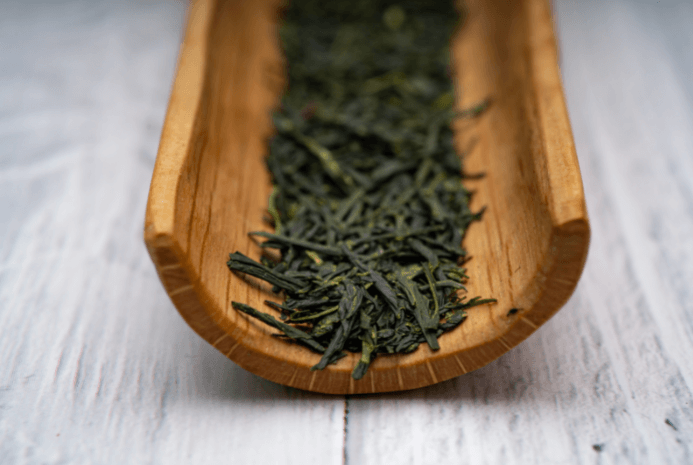
Gyokuro, also known as jade dew tea, was a favorite tea of the emperor and was often called the ‘Emperor’s tea’.
Although technically a sencha, Gyokuro undergoes shading for 21 days prior to harvest. This increases the amount of L-Theanine found in this tea, which gives it a sweet and balanced flavor with hints of umami.
A cup of Gyokuro tea has a sweet and full-bodied flavor. Given the difficult cultivation process and use of the highest quality leaves, this is the most expensive Japanese green tea. So drink it passionately and don't waste a drop!
The perfect brewing temperature for Gyokuro is around 104 to 122 degrees Fahrenheit (40 to 50 degrees Celsius), and the steeping time should be around 2 minutes.
Bancha
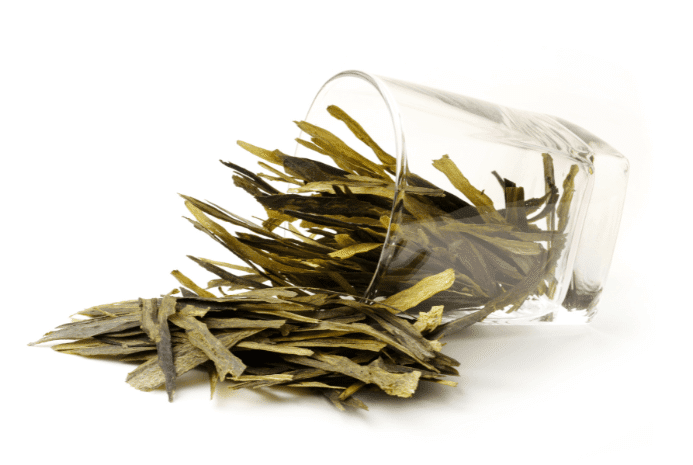
Daily tea drinkers in Japan pick bancha green tea. Unlike other green teas, it is made from mature leaves that are harvested in the autumn. The leaves are then pan-fried to create a nutty flavor.
Bancha is excellent served hot or as a cup of cold brew. For the best flavor, you’ll want to steep the tea at 180 degrees Fahrenheit (82 degrees Celsius) for one to two minutes.
Genmaicha

This unique type of Japanese tea consists of a mix of green tea and roasted brown rice. Also called “popcorn tea” or “brown rice tea”.
Brown rice was historically used as a filler to make it available to the poorer Japanese population. This tea is characterized by a full nutty flavor and a yellow hue.
The perfect brewing temperature is around 160 to 180 degrees Fahrenheit (70 to 80 degrees Celsius), and the steeping time should be about 3 to 5 minutes.
People Also Search For:
- What is White Tea? Discover This Extraordinary Tea Type
- Debunking 10 Unbe-Leaf-able Tea Myths: What’s True & What’s Not?
- A Detailed Guide on How to Use a Tea Kettle Properly!
- 6 Interesting Types of Traditional Tea Pets To Collect
- Want a Luxury Tea Set? Check out these Ones!
- The Best Tea Infuser Reviews According to the Experts
Frequently Asked Questions
Is green tea healthy?
Many consider green tea the healthiest beverage in the world. Research shows that it is loaded with antioxidants that help prevent heart disease, reduce the risk of stroke, and offer protection against cancer (11). Green tea also can help you lose weight.
What green tea is healthiest?
Many consider matcha green tea the healthiest green tea because the entire leaf is consumed and it has a high concentration of beneficial compounds. Studies have shown that matcha tea prevents many diseases while supporting cognitive function and healthy skin (12).
What to look for when buying green tea?
Always look for green tea brands that are grown organically without harmful pesticides. Also, look for loose leaf green tea instead of tea bags.
How can you tell if green tea is high quality?
The price tag is not always an indicator of quality. The best green tea should smell grassy and refreshing. It should have a lovely deep aroma and the origin should always be recognizable.
What is the purest form of green tea?
With most green tea you simply strain the leaves of the tea using hot water. However, with matcha fine powder you consume the entire leaves and stems in powder form which makes it the purest form of green tea.
Is cold green tea good for you?
You must steep the tea for a sufficient amount of time to truly release the antioxidants. After steeping, you can drink the tea hot or cold. Usually, you should steep for two to five minutes to truly gain the benefits of the polyphenols, but some green tea types require less steeping to retain their sweetness.
Is it OK to drink green tea every day?
Yes, but you should drink green tea in moderation in the amount of no more than eight cups per day.
Can green tea make you lose weight?
Yes, many diet supplements contain green tea as an active ingredient to help in weight loss. Green tea can increase your calorie expenditure, so you burn more fat. Used in conjunction with a healthy diet and exercise, green tea is a beneficial tool in your weight loss journey. Research has shown that combining green tea with exercise does appear to promote weight loss (13). Check out our best green teas for weight loss post to learn more!
Who should not drink green tea?
Sometimes green tea might not be ideal for certain individuals. If you suffer from liver problems, stomach ulcers, anxiety, high blood pressure, kidney problems, or heart problems you should avoid green tea without first consulting with your physician. If you are pregnant or breastfeeding, you should also not drink green tea before gaining the green light from your doctor.
What goes well with green tea?
Jasmine green tea with jasmine flowers or green mint tea is amongst the most popular additives to green tea.
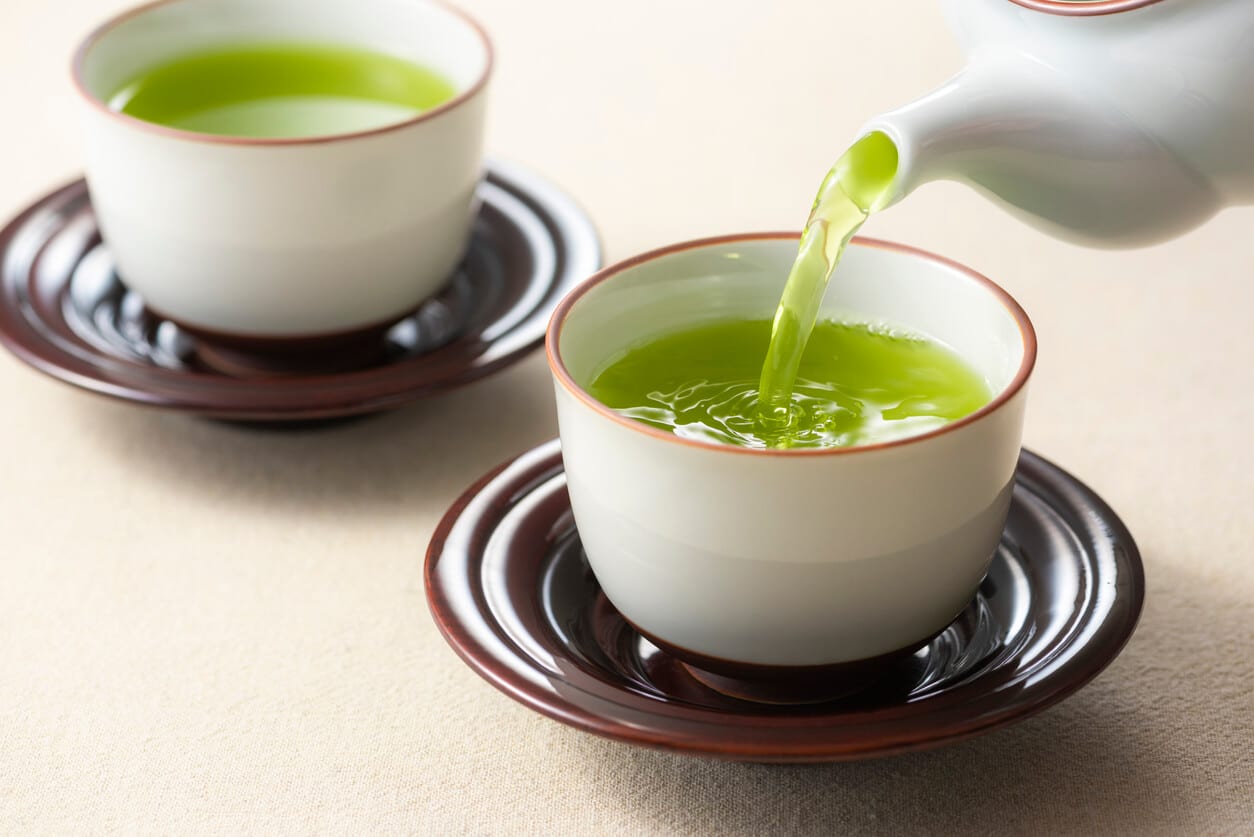
Bottom Line
For centuries, people have turned to green tea as a refreshing beverage and for its many health benefits. Drinking green tea bolsters your health, provides natural nutrients, and tastes fantastic.
There are many different types of green tea to pick between so why not make a commitment to try a different variety every week or month? Soon you’ll discover why world leaders, emperors, and dignitaries have all fallen in love with green tea as their number one beverage choice.
Isn’t it tea time now?
This article is intended for informational purposes only. It is not meant to replace professional medical advice, treatment or diagnosis. Do not consume any type of coffee, tea or herbal infusion if you are allergic to it. The information in this article is not intended to treat serious medical conditions. Please seek professional medical advice before using home remedies.
(1) https://www.consumerreports.org/dieting-weight-loss/truth-about-green-tea-for-weight-loss/
(2) https://www.teausa.com/teausa/images/Tea_Fact_Sheet_2019_-_2020._PCI_update_3.12.2020.pdf
(3) https://en.wikipedia.org/wiki/History_of_tea_in_China
(4) https://en.wikipedia.org/wiki/Boston_Tea_Party
(5) https://www.statista.com/statistics/275639/tea-production-in-china/
(6) https://www.statista.com/statistics/663227/japan-domestic-green-tea-production/
(7) https://www.borntea.com/products/chinese-green-tea-biluochun
(8) http://silverneedleteaco.com/tea-collection/dragon-well-long-jing
(9) https://en.wikipedia.org/wiki/Umami
(10) https://en.wikipedia.org/wiki/Gunpowder_tea
(11) https://www.ncbi.nlm.nih.gov/pmc/articles/PMC2855614/
(12) https://pubmed.ncbi.nlm.nih.gov/33375458/
(13) https://www.psu.edu/news/research/story/research-suggests-green-tea-exercise-boost-weight-loss-health/